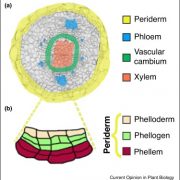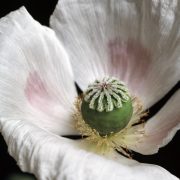Best of 2016: Top Topics in Plant Physiology jounal
We’ve highlighted some of the Plant Physiology papers that were widely shared, liked, blogged, retweeted and otherwise garnered high-levels of attention this year. Perhaps you can use some of that holiday-season quiet time to catch up on those you missed.
 The breakaway attention-getter from Plant Physiology this year was “Mechanosensitivity below ground: touch-sensitive smell-producing roots in the shy plant Mimosa pudica” , demonstrating once again that to engage the public, show them plants that move. This paper currently has an Altmetric score of 213, largely due to its extensive coverage in the popular press.
The breakaway attention-getter from Plant Physiology this year was “Mechanosensitivity below ground: touch-sensitive smell-producing roots in the shy plant Mimosa pudica” , demonstrating once again that to engage the public, show them plants that move. This paper currently has an Altmetric score of 213, largely due to its extensive coverage in the popular press.
Other top attention getters by category include:
Topical Reviews and Updates
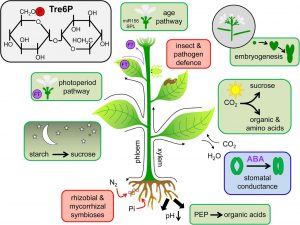 A Tale of Two Sugars – Trehalose 6-Phosphate and Sucrose http://www.plantphysiol.org/content/172/1/7.long
A Tale of Two Sugars – Trehalose 6-Phosphate and Sucrose http://www.plantphysiol.org/content/172/1/7.long
Rethinking Guard Cell Metabolism http://www.plantphysiol.org/content/172/3/1371.short
Hybridization in Plants: Old Ideas, New Techniques http://www.plantphysiol.org/content/early/2016/11/28/pp.16.01340.full.pdf+html
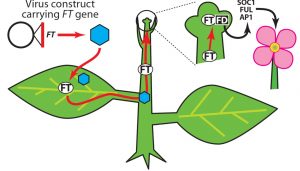 Virus-Induced Flowering: An Application of Reproductive Biology to Benefit Plant Research and Breeding http://www.plantphysiol.org/content/early/2016/11/17/pp.16.01336.full.pdf+html
Virus-Induced Flowering: An Application of Reproductive Biology to Benefit Plant Research and Breeding http://www.plantphysiol.org/content/early/2016/11/17/pp.16.01336.full.pdf+html
Breakthrough Technologies
Novel Approach for High-Throughput Metabolic Screening of Whole Plants by Stable Isotopes http://www.plantphysiol.org/content/171/1/25
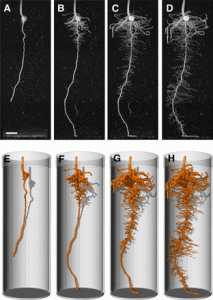 Quantitative 3D Analysis of Plant Roots Growing in Soil Using Magnetic Resonance Imaging http://www.plantphysiol.org/content/170/3/1176
Quantitative 3D Analysis of Plant Roots Growing in Soil Using Magnetic Resonance Imaging http://www.plantphysiol.org/content/170/3/1176
An Effective Strategy for Reliably Isolating Heritable and Cas9-Free Arabidopsis Mutants Generated by CRISPR/Cas9-Mediated Genome Editing http://www.plantphysiol.org/content/171/3/1794
High-Throughput Phenotyping of Maize Leaf Physiology and Biochemistry Using Hyperspectral Reflectance http://www.plantphysiol.org/content/early/2016/11/15/pp.16.01447.full.pdf+html
 Superoxide and Singlet Oxygen Produced within the Thylakoid Membranes Both Cause Photosystem I Photoinhibition http://www.plantphysiol.org/content/171/3/1626
Superoxide and Singlet Oxygen Produced within the Thylakoid Membranes Both Cause Photosystem I Photoinhibition http://www.plantphysiol.org/content/171/3/1626
The ROS Wheel: Refining ROS Transcriptional Footprint http://www.plantphysiol.org/content/171/3/1720.full
Redox- and Reactive Oxygen Species-Dependent Signalling In and From the Photosynthesizing Chloroplast http://www.plantphysiol.org/content/171/3/1541.abstract
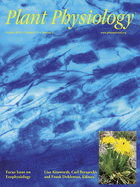 Phosphate-Dependent Root System Architecture Responses to Salt Stress http://www.plantphysiol.org/content/172/2/690
Phosphate-Dependent Root System Architecture Responses to Salt Stress http://www.plantphysiol.org/content/172/2/690
Surveying Rubisco Diversity and Temperature Response to Improve Crop Photosynthetic Efficiency http://www.plantphysiol.org/content/172/2/707
The Quest for Understanding Phenotypic Variation via Integrated Approaches in the Field Environment http://www.plantphysiol.org/content/172/2/622
Examining Plant Physiological Responses to Climate Change Through an Evolutionary Lens http://www.plantphysiol.org/content/172/2/635.full
Membranes, Transport, and Bioenergetics
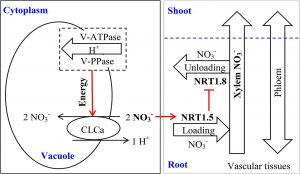 Nitrogen Use Efficiency Is Mediated by Vacuolar Nitrate Sequestration Capacity in Roots of Brassica napus http://www.plantphysiol.org/content/170/3/1684
Nitrogen Use Efficiency Is Mediated by Vacuolar Nitrate Sequestration Capacity in Roots of Brassica napus http://www.plantphysiol.org/content/170/3/1684
Biochemistry and Metabolism
An NADPH-Oxidase/Polyamine Oxidase Feedback Loop Controls Oxidative Burst Under Salinity http://www.plantphysiol.org/content/172/3/1418
ORM Expression Alters Sphingolipid Homeostasis and Differentially Affects Ceramide Synthase Activity http://www.plantphysiol.org/content/172/2/889.abstract
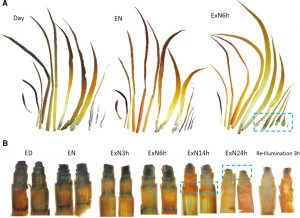 The Interplay between Carbon Availability and Growth in Different Zones of the Growing Maize Leaf http://www.plantphysiol.org/content/172/2/943
The Interplay between Carbon Availability and Growth in Different Zones of the Growing Maize Leaf http://www.plantphysiol.org/content/172/2/943
Cell Biology
Exocyst SEC3 and Phosphoinositides Define Sites of Exocytosis in Pollen Tube Initiation and Growth http://www.plantphysiol.org/content/172/2/980
Demonstration of A Distinct Pathway for Polar Exocytosis for Plant Cell Wall Formation http://www.plantphysiol.org/content/172/2/1003
Systems and Synthetic Biology
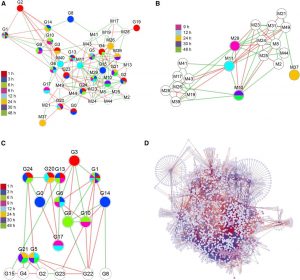 A Transcriptional and Metabolic Framework for Secondary Wall Formation in Arabidopsis http://www.plantphysiol.org/content/172/2/1334
A Transcriptional and Metabolic Framework for Secondary Wall Formation in Arabidopsis http://www.plantphysiol.org/content/172/2/1334
Signaling and Response
Chloroplasts Are Central Players in Sugar-Induced Leaf Growth http://www.plantphysiol.org/content/171/1/590
An E3 Ligase Affects the NLR Receptor Stability and Immunity to Powdery Mildew http://www.plantphysiol.org/content/172/4/2504
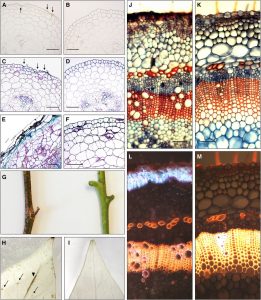 Cell Death Control by Matrix Metalloproteinases http://www.plantphysiol.org/content/171/2/1456
Cell Death Control by Matrix Metalloproteinases http://www.plantphysiol.org/content/171/2/1456
Genes, Development and Evolution
Origin and Functional Predition of Pollen Allergens in Plants http://www.plantphysiol.org/content/172/1/341
Banana MaMADS Transcription Factors Are Necessary for Fruit Ripening and Molecular Tools to Promote Shelf-Life and Food Security http://www.plantphysiol.org/content/171/1/380
Gains and Losses of Cis-regulatory Elements Led to Divergence of the Arabidopsis APETALA1 and CAULIFLOWER Duplicate Genes in the Time, Space, and Level of Expression and Regulation of One Paralog by the Other http://www.plantphysiol.org/content/171/2/1055
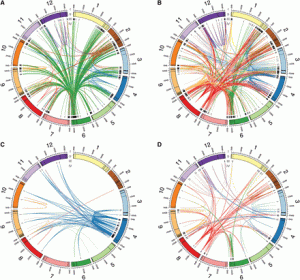 eQTL Regulating Transcript Levels Associated with Diverse Biological Processes in Tomato http://www.plantphysiol.org/content/172/1/328
eQTL Regulating Transcript Levels Associated with Diverse Biological Processes in Tomato http://www.plantphysiol.org/content/172/1/328
Optimization of Light-Harvesting Pigment Improves Photosynthetic Efficiency http://www.plantphysiol.org/content/172/3/1720
Ecophysiology and Sustainability
Relationships of Leaf Net Photosynthesis, Stomatal Conductance, and Mesophyll Conductance to Primary Metabolism: A Multispecies Meta-Analysis Approach http://www.plantphysiol.org/content/171/1/265
In Situ Visualization of the Dynamics in Xylem Embolism Formation and Removal in the Absence of Root Pressure: A Study on Excised Grapevine Stems http://www.plantphysiol.org/content/171/2/1024
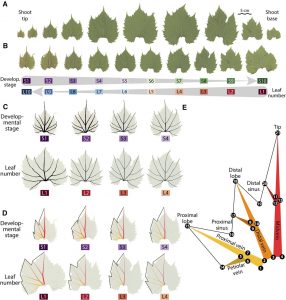 Climate and Developmental Plasticity: Interannual Variability in Grapevine Leaf Morphology http://www.plantphysiol.org/content/170/3/1480
Climate and Developmental Plasticity: Interannual Variability in Grapevine Leaf Morphology http://www.plantphysiol.org/content/170/3/1480
Water Deficit Enhances C Export to the Roots in Arabidopsis thaliana Plants with Contribution of Sucrose Transporters in Both Shoot and Roots http://www.plantphysiol.org/content/170/3/1460
X-Ray Computed Tomography Reveals the Response of Root System Architecture to Soil Texture http://www.plantphysiol.org/content/171/3/2028
Established in 1926, Plant Physiology is an international journal that publishes on the broadest aspects of plant biology. The journal welcomes original submissions that offer new and fundamental insights into the origins, development, and function of plants from the molecular to the whole organism and its interactions within the biotic and abiotic environment. Plant Physiology encourages submissions that span a range of technologies, including those of structural, molecular, and cellular biology, biochemistry, biophysics, bioenergetics, genetics, physiology, and field-based approaches as well as those making use of synthetic, bioinformatics, and -omics tools.
Research categories include:
- Biochemistry and Metabolism
- Breakthrough Technologies
- Cell Biology
- Ecophysiology and Sustainability
- Genes, Development, and Evolution
- Membranes, Transport, and Biogenetics
- Signaling and Response
- Systems and Synthetic Biology




